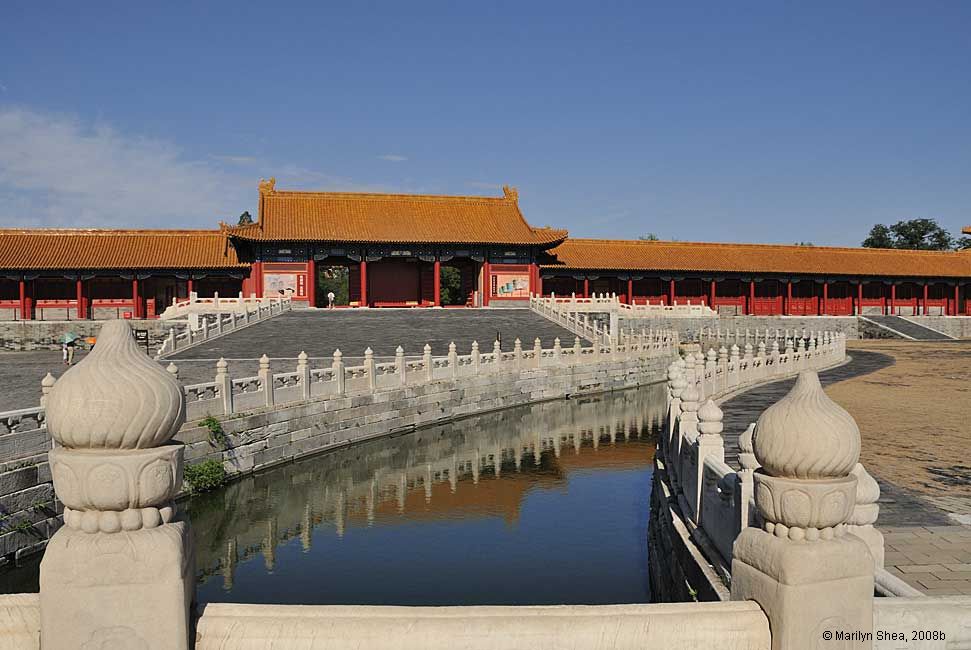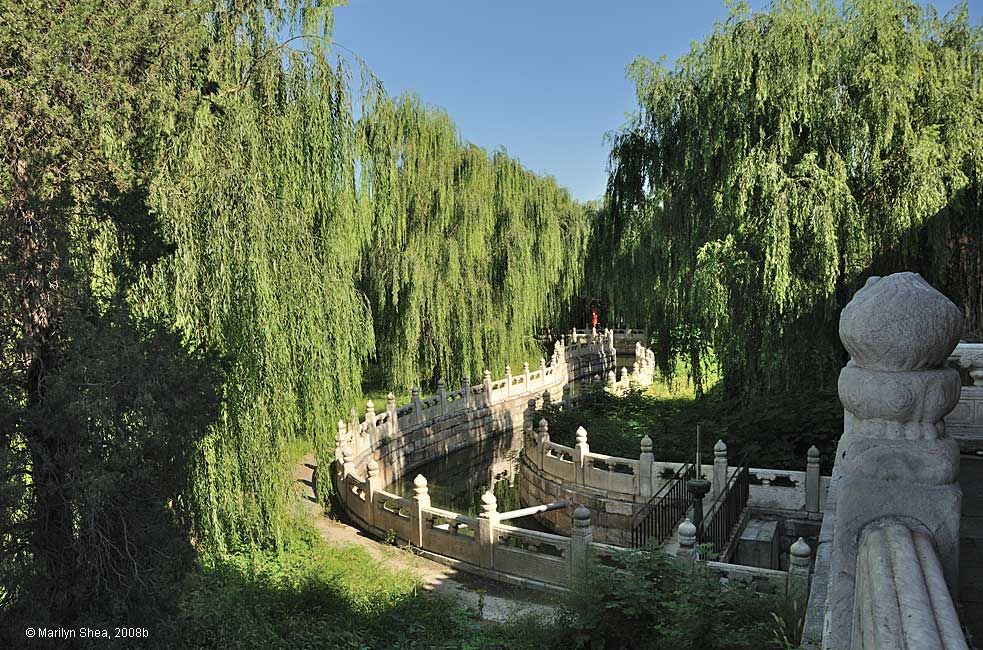 |
| The Gate of Glorious Harmony 熙和门 (Xīhémén) is on the west side of the Inner Golden Water Bridge 内金水桥 (Nèi Jīnshuǐ Qiáo). The rooms within this gate and to either side were well used from the beginning. Emperor Yongle 永乐 (Yǒnglè), who built the palace in the early 1400s, chose these rooms for meetings during the winter. The morning would begin with a large formal audience in one of the main halls and then groups would move here to discuss and work on various projects. The rooms were smaller and easier to heat. As you can see, the early morning sun would give solar gain on a sunny day. When it was first built it was called the Gate of West Obedience, 右顺门 (Yòu Shùn Mén). Right is synonymous with "west" in Chinese.
The gate was remodeled several times and had many names. It was during the reign of the Qing Emperor Qianlong that the gate was given its present name. Passing through this gate will take you to the western portions and the Hall of Martial Valor. It was through this gate that the image of the Inner Golden River was taken as it passed through gardens. Eventually, you can exit by the west gate to the Forbidden City, the equivalent of the east gate seen earlier. Notice the finials on the posts. They are in the "flame on lotus design," indicating light and enlightenment. These posts have been replaced. Normally, they would show quite a bit of erosion. Take a look at the same posts on the image of the western portion of the palace. To distinguish the emperor's pathway, the finials on the center bridge over the Inner Golden River has an imperial design of dragons and clouds rather than the "flame on lotus" design. |
 |
http://hua.umf.maine.edu/China/HistoricBeijing/Forbidden_City/index.html
Last
update: January 2010
© Marilyn Shea, 2009